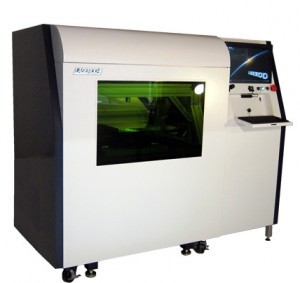How UV Lasers Helps In Printed Circuit Board (PCB) Drilling

The trend in designing printed circuit boards (PCB) towards smaller features at very high densities is necessary to serve the fast-growing demand for high-tech customer products. This includes new laser processing capabilities, including laser micro drilling. PCB drilling machines are a modern generation of drilling machines that use a high-power picosecond laser to allow the higher output of blind holes in PCBs.
What are the Advantages of Laser Micro Drilling in the Medical Industry?

Laser micromachining today holds an indispensable part in the medical sector. Lasers are used in the manufacturing and processing of medical equipment. Medical laser micro-drilling services are much sought after for manufacturing components such as dental, orthopedic, cardiovascular implants, hearing aid mechanisms, etc.
Why Laser Micro Drilling Is Considered As The Best Drilling Method

Laser micromachining involves laser micro drilling, laser welding, laser cutting, and laser system integration. It is the most efficient manufacturing technology and is rapidly gaining popularity. In any industry, whether military, medical, aerospace engineering, automotive, space propulsion, or high-tech manufacturing, laser micromachining has immense benefits.
Why Laser Micro Drilling Is The Preferred Choice For Precision Performance

Laser micro-drilling, rather than using sharpened metals, has become increasingly common in the manufacturing world. This is because by using lasers, you can achieve consistent results when dealing with difficult designs or requiring small holes to be made in substrates. Depending on the type of laser used, holes as small as 10 micrometers can be created.
Here's Why You Should Choose Femtosecond Laser System For Reliable Micromachining

For the shaping of extremely porous structures, the femtosecond laser has established itself as a unique instrument. A femtosecond laser micromachining system can be used for the ultimate in ultrafast machining. Laser micromachining can be used to weld, cut, drill, and make other material modifications to achieve features on the single or double-digit micrometer level.
All That You Wanted To Know About Laser Drilling

High speeds and high versatility are the main benefits of laser micromachining when it comes to drilling and making holes. Micro-drilling has two distinct laser processes as with cutting: fusion drilling with pulsed lasers and additional gas support - and vaporization-induced melt ejection, such as with q-switched solid-state lasers. By choosing the proper wavelength and power density of the laser beam, almost all solid materials such as metals, semiconductors, plastics, ceramics, diamonds, etc. can be laser-drilled.
Why Laserod Technologies Is One Of The Leading Experts In Silicon Laser Micromachining

Laser cutting is applied to different materials and components where reliable, quick, and force-free processing is needed for complex contours. In this technique, lasers create narrow kerfs and achieve high precision cuts. This approach demonstrates no distortion, and in many situations, post-processing is not required since only a limited amount of heat input is subjected to the material and mostly are dross-free.
Everything You Wanted To Know About Cold Ablation

The ablation method is fundamental for laser micromachining. Conventional pulsed-laser machining processes dissociate matter at atomic and molecular levels by application of laser radiation. The absorbed laser energy is passed to the material's atomic and molecular lattice, which induces ablatement of the substance. Simultaneously, this energy is ultimately transformed into heat that disperses out of the laser spot volume beyond the laser pulse duration.
Superior Laser Micromachining Of Thin Metals With Laserod Technologies

The laser micromachining of small parts accurately and repeatability on thinner sheet metals requires a precise system. Otherwise, you're just using a sledgehammer to crack nuts and losing money in the process. The use of a high-power laser on thin metals will cause all sorts of problems that could be prevented by a less powered machine. A high-power laser, for example, is required to cut thick metal, not thin ones, so it can become unstable by under performing it.
Why Femtosecond Laser Micromachining Is The Best Choice For Microscale Polymer Machining

The femtosecond laser has proven to be a unique tool for shaping highly porous materials. A femtosecond laser micromachining system can be utilized for ultrafast machining. Likewise, laser micromachining can be utilized to cut, drill, weld, and make other material enhancements to achieve single or double-digit micrometer level features.